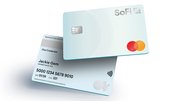Article
PNC Bank and the long drive to EMV-enabled ATMs — Part 1
The bank's 9,000-ATM fleet will be entirely EMV-enabled this month. In a two-part series, we'll look first at the internal aspects of migration — hardware and software upgrades; and then at the external aspect — making customers comfortable with the new technology.

September 13, 2016 by Suzanne Cluckey — Owner, Suzanne Cluckey Communications
In August, slightly less than two months before the ATM industry's first major EMV fraud liability shift, PNC Bank announced that it would complete the migration of its 9,000-ATM fleet to the chip standard by mid-September, ensuring that the bank would squeeze under the wire to make the MasterCard October deadline.
We were curious to find out what a successful, on-time EMV migration and launch looks like from the inside of an organization, so ATM Marketplace contacted PNC Bank Senior Vice President and ATM Executive Ken Justice to find out.
In a telephone interview, Justice described the two parts of an ATM rollout — first, the enablement of the ATM channel; and second the education of the ATM user.
Today we'll look into the nuts and bolts of migration; in a follow-up tomorrow, we'll consider the customer experience.
Q: In terms of logistics and putting the plan together, how did you do it and who did you involve?
A: A lot of people, right? It's not only the ATM vendors, but the technology people within the bank. You've got everyone in the bank, because you're impacting all the branches so you have to have them involved; you've got the operations people. …
There aren't very many departments within the bank that didn't have to be involved with this at some point. But then outside the bank, you've got the ATM vendors. So all of them were involved.
Q: When did you start the process of migrating to EMV?
A: From a hardware standpoint, we were planning for it for two or three years. What that means is that any new ATMs that we were buying we bought with an EMV card reader on them, so we were buying EMV-ready hardware.
And then we also had to go out to any machines in our fleet that had been out there longer and upgrade, at a minimum, the card reader. That would depend on the age of the ATM and what the configuration was. And in some cases we would have to do more.
So, through buying new ATMs and hardware upgrades over the last two to three years we've gotten the hardware ready. And we faced a point in the lifecycle of our software where we needed to move off of Windows XP to Windows 7. And at the same time, the bank had an interest into moving to a multivendor software environment where we could run the same application across different vendors' hardware.
In a network the size of ours — that's about 9,000 terminals — you end up with different hardware vendors in that fleet and when you can run the same application stack across all of them, it makes the user experience the same, it makes the capabilities that you offer the same. It even makes the employee experience — when people have to take care of the care and feeding of the ATM — the same.
And then as part of that, we knew that EMV was coming and so we laid out a plan to do all three.
Q: How did it work out doing all three upgrades at once?
A: I don't recommend it, but we didn't have a choice. We had to get off of XP. In a perfect world, it would have been easier to have done the operating system separately from replacing the entire application.
So it was not an ideal way to do it, but we felt like it was the best way for us to do it, given where we were. Through a whole lot of really hard effort from a lot of folks, we got it done.
Q: Is it even possible to run EMV on Windows XP?
A: To say it's not possible is probably not the right way to answer it. I would say that no one has chosen to support it. Every one of the ATM software vendors said, "If you want EMV, here is the environment that we're going to offer it to you in."
Q: So, two to three years for the hardware; how long did the software upgrade take?
A: The software part — the multivendor and the move to Windows 7 — took about eight months and that's purely because you can't send that much software down to 9,000 ATMs at one time and so you have to kind of bite off a certain number every week.
But then the turning on of EMV is actually more like a six-week effort once you decide to roll it out. Again, you don't switch all of your machines at one time. … We want to be careful because if there is a problem, we want to be thinking about the impact it might have on our customers.
Q: I'm guessing that communication was a fairly important part of getting this all to happen.
A: Yeah, it's a huge amount of product management. You try to do this stuff overnight also, when the ATMs are having the least amount of transactions taking place. And you end up with a whole lot of 4 a.m. conference calls for people to hop on to see how things went. You always have some machines that didn't recover well, and you've got to send the ATM vendors out to them so they can manually bring them back up.
Q: What was the certification process like?
A: First Data actually took care of that for us. They're driving the ATMs so they're the ones that actually had to get the EMV certification.
Q: I'm hearing about some bottlenecks with certification. How did that go with First Data?
We've been on schedule actually. The harder part for us was the move to Windows 7 and the multivendor software.
I don't want to make [EMV migration] sound too easy, but everything is relative. The other stuff was really, really hard. So if you do all of that first, then EMV sounds like a piece of cake.
About Suzanne Cluckey
Suzanne’s editorial career has spanned three decades and encompassed all B2B and B2C communications formats. Her award-winning work has appeared in trade and consumer media in the United States and internationally.













